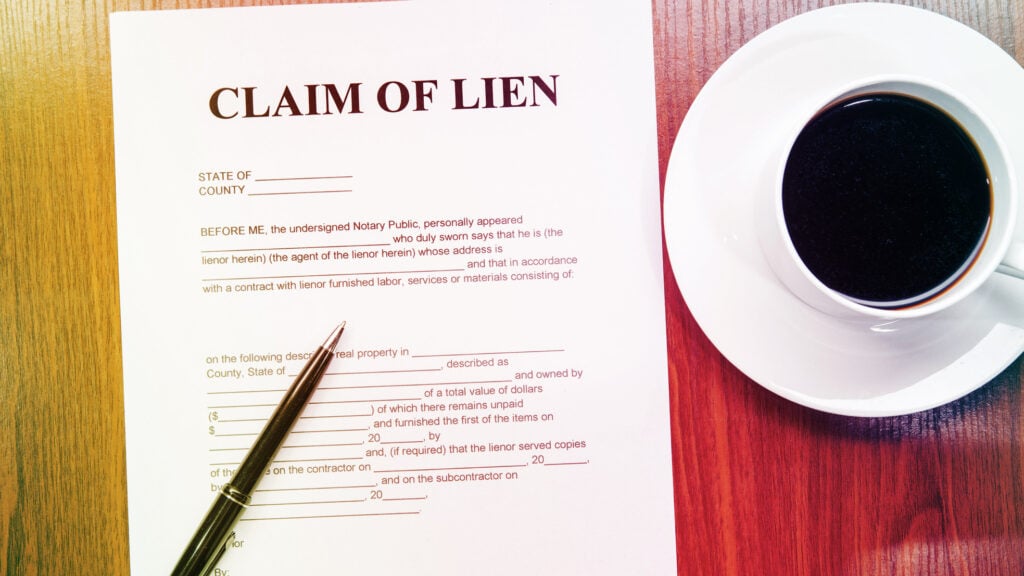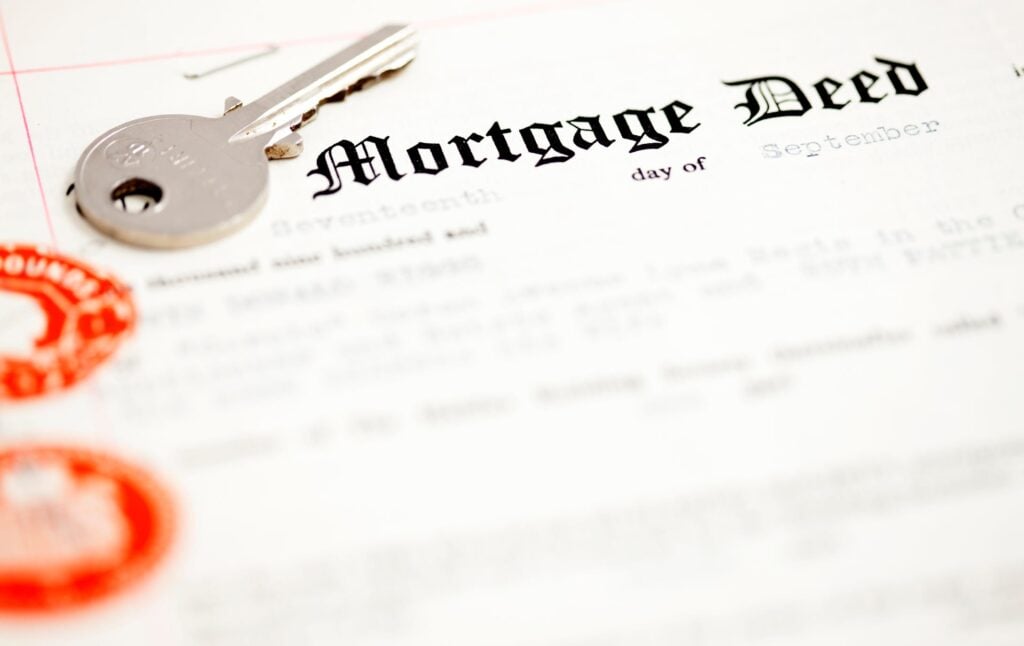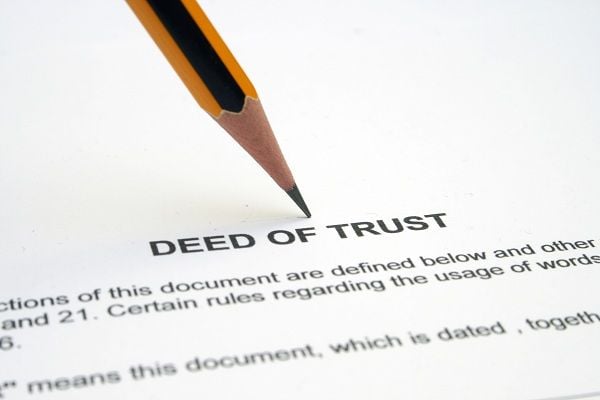In simple terms, an encumbrance in real estate is a liability on a property.
Usually, it’s in the form of a claim against that property by another person other than the property owner.
An encumbrance is a restriction that could affect the value of the concerned property and may place limitations on how the property is used.
In this guide, we will look at the common encumbrances found in real estate so you have a better understanding of how they work and how best to navigate them during real estate investing, or the sale or transfer of a home, land, or another type of property.
Below you will find a comprehensive list of the primary types of real estate encumbrances plus a detailed explanation of how they work.
Liens
There are many reasons a lien may be placed on your property, including tax debt, but an outstanding mortgage is the most common type of lien.

Generally, liens can be divided into voluntary and involuntary liens. A voluntary lien is one that you agree with.
For instance, you can offer your house as security when taking out a mortgage or a home equity line of credit (HELOC), which provides you with emergency cash and reusable credit you can use for home improvements, debt consolidation, or other legitimate purposes.
Once you take out a HELOC, the voluntary lien can only be satisfied by paying off any amount owed.
The HELOC remains open with a zero balance, but you’ll need to close the HELOC to remove the lien.
Once the HELOC is closed, the records are updated, and it’s no longer an encumbrance. Moving on to involuntary liens, this lien is placed on the property you own without your consent.
There are several types of liens, starting with tax liens. These are placed on your property if you owe money to the government.
Whether you owe property or income tax, a federal lien is prioritized over other types of encumbrances.
There is also a mechanic’s lien, which is placed on your property because you owe a contractor for services done to improve your property.
In the same vein, a Lis Pendens is a type of lien that signifies that your property is involved in a legal matter that’s still pending, such as a question of ownership or a contractual dispute.
Usually, once a lis pendens is filed, it can restrict the owner from selling or transferring the property.
For instance, if you have inherited your property from someone else, another heir can file a lis pendens to stop you from selling the property until a court verdict determines their eligibility for a share of the property.
Liens involving money can be satisfied when the property is sold if the sale price is high enough to pay the liens.
Deed Restrictions and Restrictive Covenants
A deed restriction has a self-explanatory name because it’s a restriction that’s written into the deed.

So, even if the property is sold, transferred, or inherited, you may not be able to use it for a particular purpose as per the instructions of a developer or previous owner who first placed those restrictions.
It’s especially important to understand the specific details of a deed restriction because they can’t be removed from the deed and will affect all future owners.
Deed restrictions are most common when a large piece of land has been subdivided into smaller properties, such as in the creation of a new neighborhood.
When these smaller properties are sold, all the owners will inherit any deed restrictions that were part of the original tract.
Deed restrictions are sometimes referred to as “restrictive covenants” where homeowners associations may have a say in how you can use and manage your property.
For instance, you may not be allowed to put up certain structures on your property, and you will be expected to comply fully with any requirements included in the restrictive covenants.
Deed of Trust or Mortgage Encumbrance
A mortgage is an encumbrance because it’s an agreement between you (the borrower) and a mortgage provider that restricts you from selling the property unless you pay off what you owe.

Similarly, a deed of trust is an agreement between you, a lender, and a trustee, and it must be satisfied before you can sell or transfer the property to another owner.
Once you have satisfied any debts attached to the property, the debt will be formally released from the property, and the new owner will have a clear title.
Easements
An easement is the most common type of a non-lien encumbrance.
In a nutshell, an easement allows other entities other than the property owner to access the property.
The most common cases of easements are when utility companies gain the right to install electric, water, gas, and sewer lines around or along your property.
Another common type of easement is when a neighbor has to pass through your land to reach the street because their property is landlocked.
This can prevent you from using that portion of the property in a certain way and will, therefore, affect your property ownership rights.
Encroachment
An encroachment is a type of encumbrance that is best explained by giving a few examples.
The most common form of encroachment as an encumbrance is when a neighbor mistakenly places an improvement such as a shed or a fence beyond their property line.

So, when they attempt to sell the property, they will be selling a portion that does not belong to them.
Once an encroachment is recorded in a survey,, it will only be removed if the parties involved record an easement or if the encroaching party physically removes the encroachment.
Otherwise, an encroachment can affect ownership rights. If you are attempting to sell your property, an encroachment can affect its marketability.
It can also affect the property’s insurability if you are a new owner.
What Is a Title Examination?
In addition, homeowners should figure out how a particular encumbrance affects the value of their property and their ability to market and sell it at a satisfactory price.
However, the seller should not attempt to hide any encumbrances but must make sure they disclose any restrictions on the property in an appropriate manner.
Buyers can confirm the existence (or non-existence) of encumbrances by having a real estate attorney or title company perform a title exam (or title search).
The title examination provides proof that allows the homeowner to sell or transfer ownership of the property.
It’s also possible to search the county Register of Deeds (typically online) for existing deeds of trust, deed restrictions, easements, and other encumbrances.
Final Thoughts: What is an Encumbrance in Real Estate?
As you can see, there are many encumbrances that can be placed on a property.
Whether you are just beginning your journey in real estate investing, or are a real estate mogul, these encumbrances are necessary to understand.
It’s essential for buyers to understand how certain restrictions will affect the use and enjoyment of their property once they make a purchase.
Therefore, buyers are encouraged to note all these encumbrances and read all relevant documents, such as inspections, surveys, or title insurance policy documents to unearth any restrictions.
They should also seek to understand whether the encumbrance affects the property’s insurability.


 Tags:
Tags:










